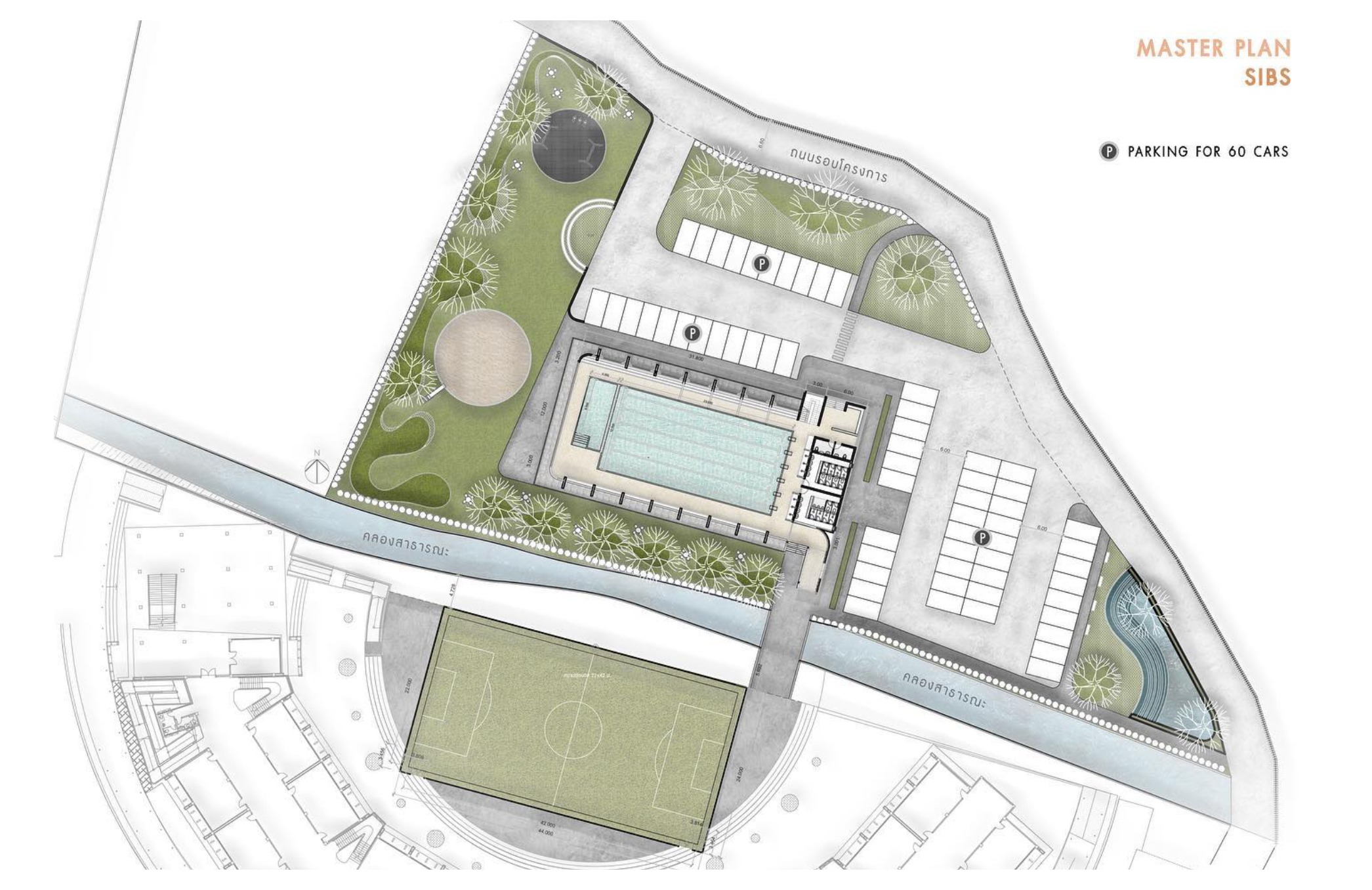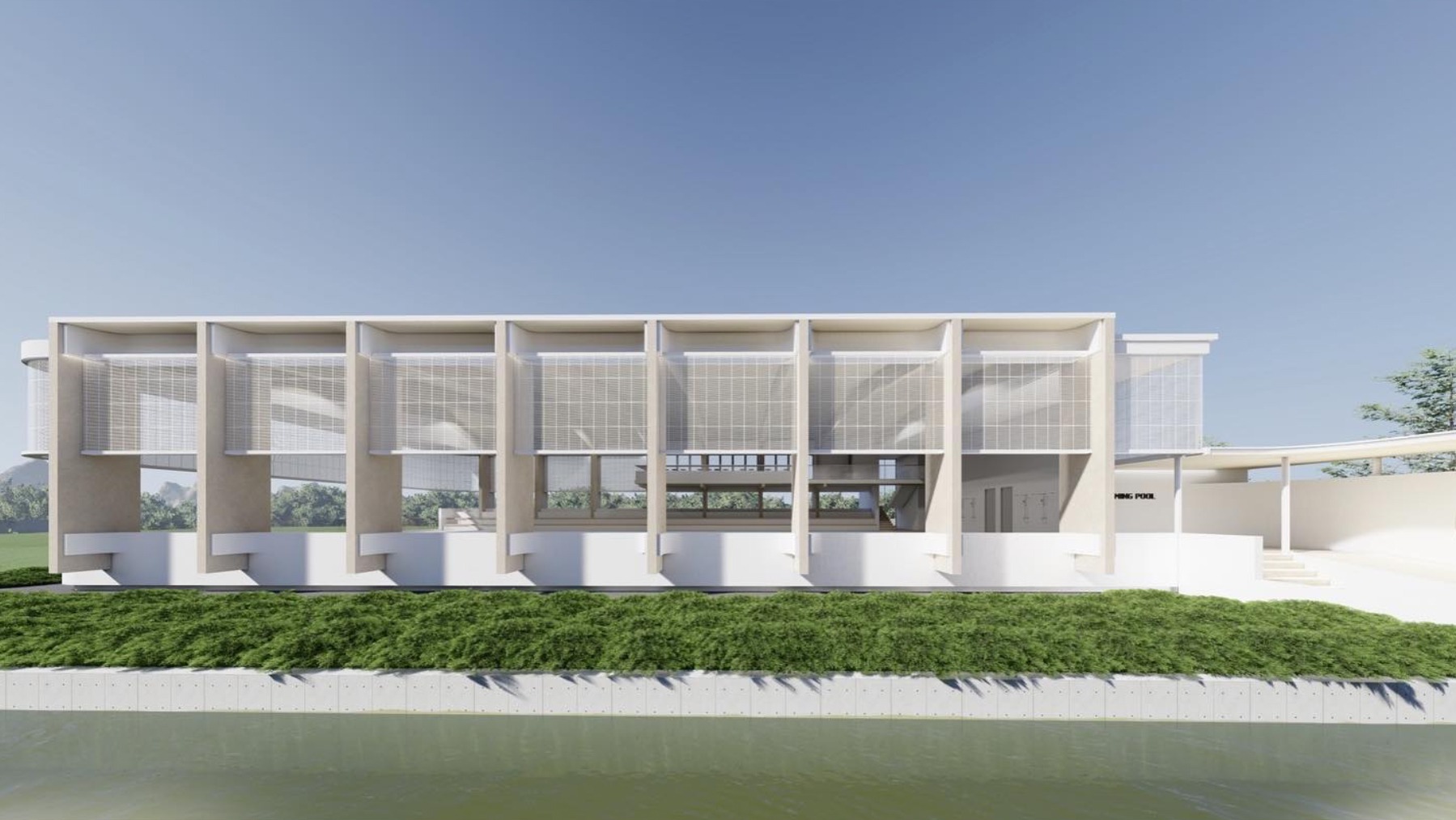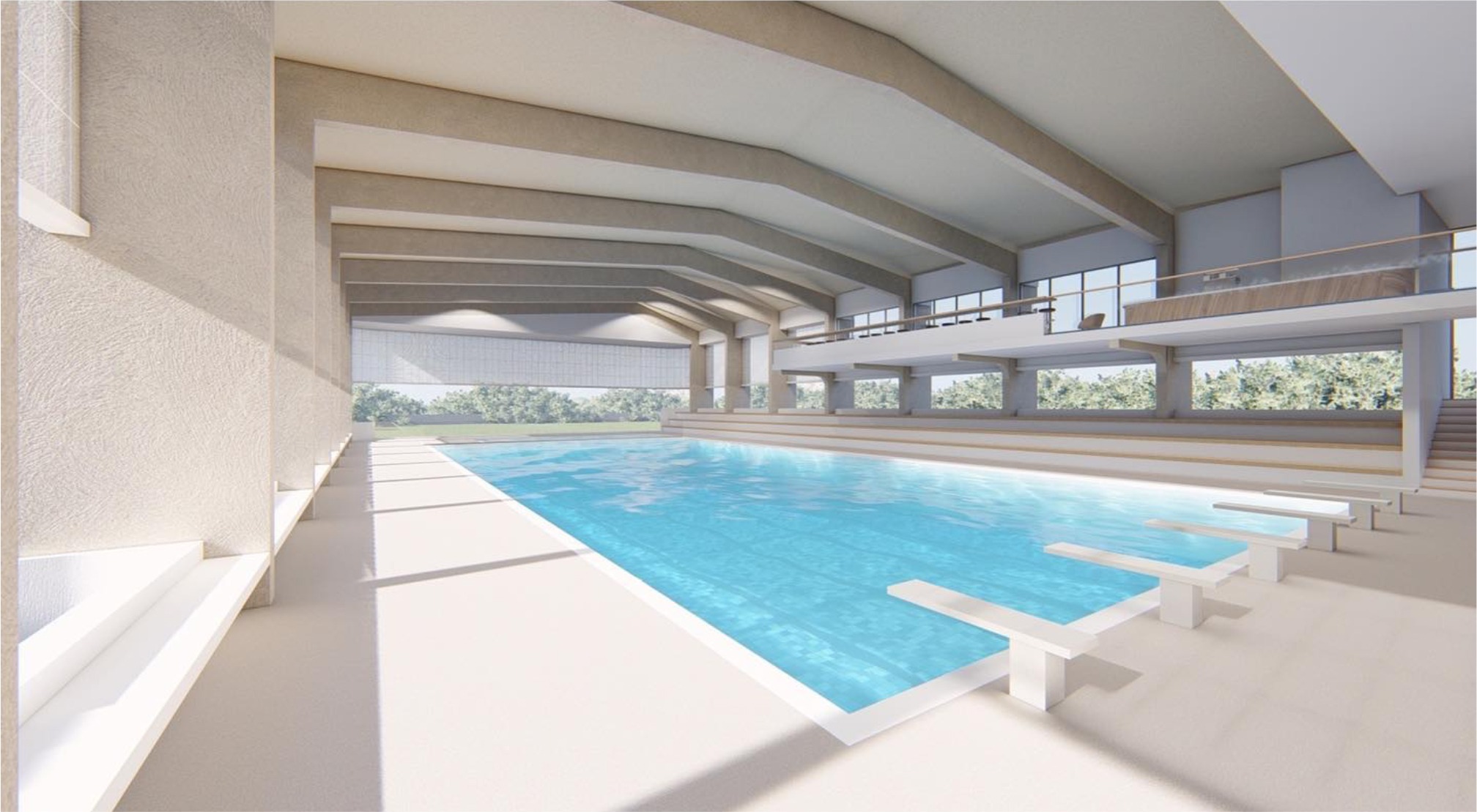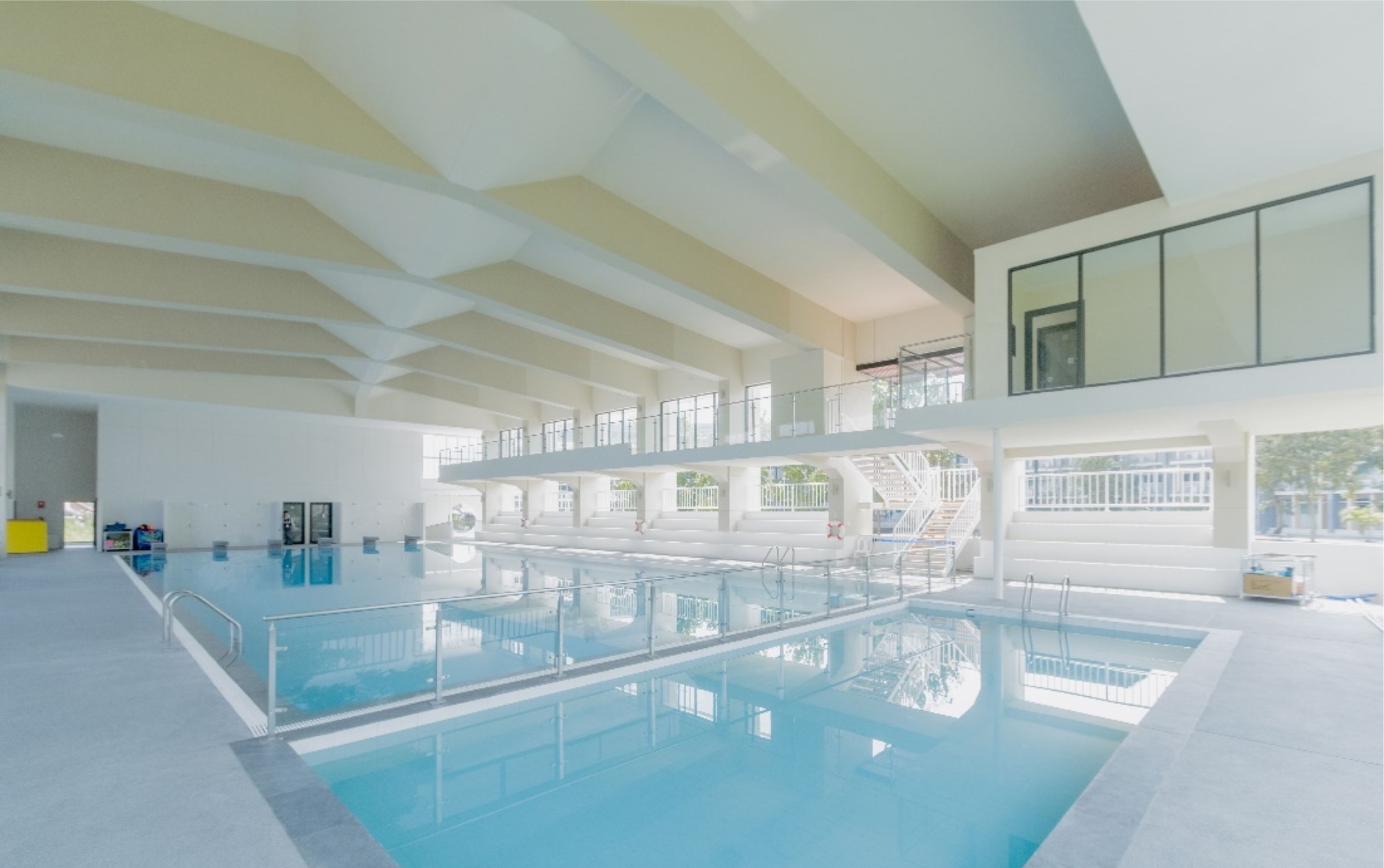
Architecture Faculty, Rangsit University
Porramaze Ponrattanasit





Abstract :
Indoor Swimming Pool Design Project of Satit International Bilingual School of Rangsit University at Chiangmai
This project presents the design of an indoor swimming pool for Satit International Bilingual School of Rangsit University at Chiangmai, aiming to create a functional, adaptable, and sustainable aquatic facility.
The design reflects the challenges of the BANI World (Brittle, Anxious, Nonlinear, and Incomprehensible) by addressing issues of resilience, safety, and flexibility in both form and function. A key concept in the design is biophilic architecture, which integrates natural light, open spaces, and eco-friendly materials to foster a calming and stimulating environment. The structure is built to accommodate educational, recreational, and competitive swimming, ensuring inclusivity for students of all skill levels. The facility also incorporates energy-efficient systems, including smart ventilation, humidity control, and a water recycling system, reducing environmental impact while maintaining high water quality.
The design ensures spatial flexibility, allowing for modifications in response to climate conditions and educational demands. Seating areas, observation decks, and training zones are strategically placed to enhance usability and encourage social interaction. The modern, minimalist aesthetic complements the surrounding landscape while reinforcing a sense of openness and connection to nature.
By prioritizing functionality, sustainability, and user well-being, this indoor swimming pool serves as an innovative model for educational infrastructure in a rapidly evolving world. The project embodies a holistic approach to learning and recreation, preparing students for a future where adaptability and resilience are essential. It not only promotes physical health but also fosters a sense of security and inspiration within an unpredictable global landscape, aligning with the core principles of a BANI world.
Objectives :
The objective of this design project is to create a modern and functional indoor swimming pool for Satit International Bilingual School of Rangsit University in Chiang Mai, aiming to meet both aesthetic and practical requirements. The design will provide an environmentally conscious, safe, and comfortable aquatic space for students, faculty, and visitors, promoting physical activity and well-being in a conducive learning environment. The project will integrate innovative design solutions, incorporating sustainable materials, energy-efficient technologies, and natural lighting to create a harmonious balance between functionality and sustainability.
Additionally, the design will be tailored to the specific needs of the school, considering factors such as accessibility, safety, and ease of maintenance. By focusing on both the physical and emotional needs of the users, the swimming pool will serve as a space that encourages holistic development.
Aligned with the theme of the 13th Arts Design International Design Exhibition, “Work in Progress,” this project will showcase an evolving approach to school infrastructure, demonstrating a thoughtful and innovative response to the challenges of modern education. It will also highlight a forward-thinking approach to design in an ever-changing world, contributing to the BANI World exhibition by emphasizing progress, adaptability, and creativity in architectural solutions.
Conceptual Framework :
The Indoor Swimming Pool Design Project for Satit International Bilingual School of Rangsit University in Chiangmai is based on principles of modern educational architecture, sustainability, and user-centered design. The goal is to create a functional, aesthetically pleasing, and adaptable space that serves both educational and recreational needs while addressing the evolving demands of modern education.
The design process revolves around three core concepts
- Sustainability and Innovation The project emphasizes the use of sustainable practices, including energy-efficient technologies, eco-friendly materials, and passive design strategies. By incorporating these elements, the project reduces its environmental impact and contributes to long-term sustainability. The aim is to create a building that not only meets the current needs but also aligns with future sustainability goals, making it a model for eco-conscious design in educational spaces.
- Health and Well-being Understanding the importance of physical activity in education, the design focuses on promoting health and well-being through the swimming pool. The space will be designed with user comfort, safety, and accessibility in mind, ensuring it is suitable for students, faculty, and visitors. Natural light and proper ventilation will enhance the experience, creating a welcoming environment that encourages physical fitness and mental well-being.
- Adaptability and Flexibility The swimming pool design will be flexible, accommodating various activities, such as swimming lessons, physical education classes, and recreational events. This adaptability aligns with the theme of “Work in Progress” for the exhibition, highlighting the need for evolving educational spaces. The design will support the dynamic nature of modern learning environments, which require spaces that can adjust to different purposes over time.
This conceptual framework reflects a forward-thinking, progressive response to modern educational and environmental challenges, contributing to the BANI World exhibition by showcasing innovation, sustainability, and adaptability in architectural design.
Process / Methodology :
–
Techniques and Materials :
–
Result / Conclusion :
The Indoor Swimming Pool Design Project for Satit International Bilingual School of Rangsit University in Chiangmai demonstrates a progressive approach to architectural design, aligning with the evolving educational needs of the institution. By incorporating sustainable practices, innovative technologies, and a focus on user-centered design, the project not only offers a functional and aesthetically pleasing space but also addresses environmental concerns. The result is a space that benefits both the users and the planet, creating an environment conducive to physical and mental well-being.
The design prioritizes the health and safety of students, faculty, and visitors, providing a space that encourages physical activity and wellness. By integrating natural lighting and efficient ventilation, the swimming pool area ensures comfort while creating an inviting atmosphere. These elements contribute to the overall experience, promoting the importance of physical fitness as a vital part of education.
Moreover, the pool’s design reflects flexibility and adaptability, ensuring that it can accommodate a wide range of activities, from swimming lessons to recreational events. This adaptability mirrors the theme of “Work in Progress” and is essential for meeting the dynamic needs of an educational environment.
The design ensures the space will remain relevant and useful over time, adapting to changing educational requirements. In conclusion, this project embodies the core values of the BANI World exhibition, where innovation, sustainability, and adaptability play central roles in shaping the future of architecture. The indoor swimming pool design is a forward-thinking response to modern educational infrastructure, showcasing a balance between sustainability, user experience, and flexibility. This project represents the potential for architecture to evolve in line with societal changes, offering a model for future educational spaces that prioritize well-being, adaptability, and long-term sustainability.
References :
Jones, A. P. (2019). Architectural design for sustainable education spaces. Wiley & Sons.
Smith, J., & Brown, R. L. (2020). The role of sustainable design in modern educational facilities. Journal of Architecture and Education, 15(2), 55-72. https://doi.org/10.1080/1234567890
International Energy Agency. (2021). Energy efficiency in educational buildings: A global perspective. IEA Publications.
Patel, V. (2018). Designing for wellness in educational spaces: A focus on swimming pool design. In Proceedings of the International Conference on Sustainable Architecture and Design (pp. 100-105). University Press.